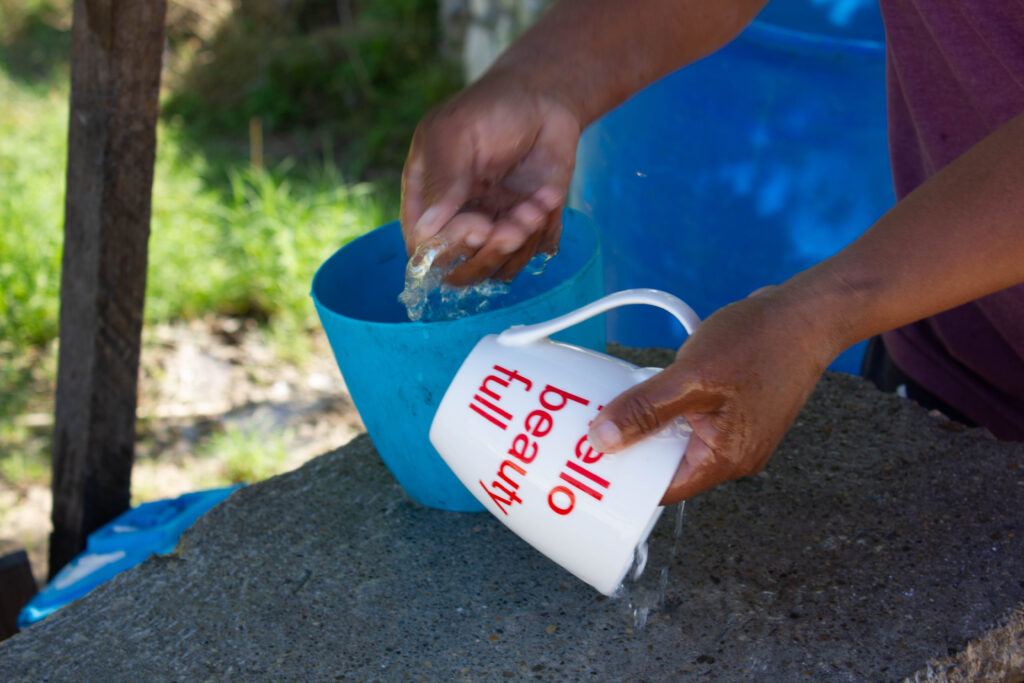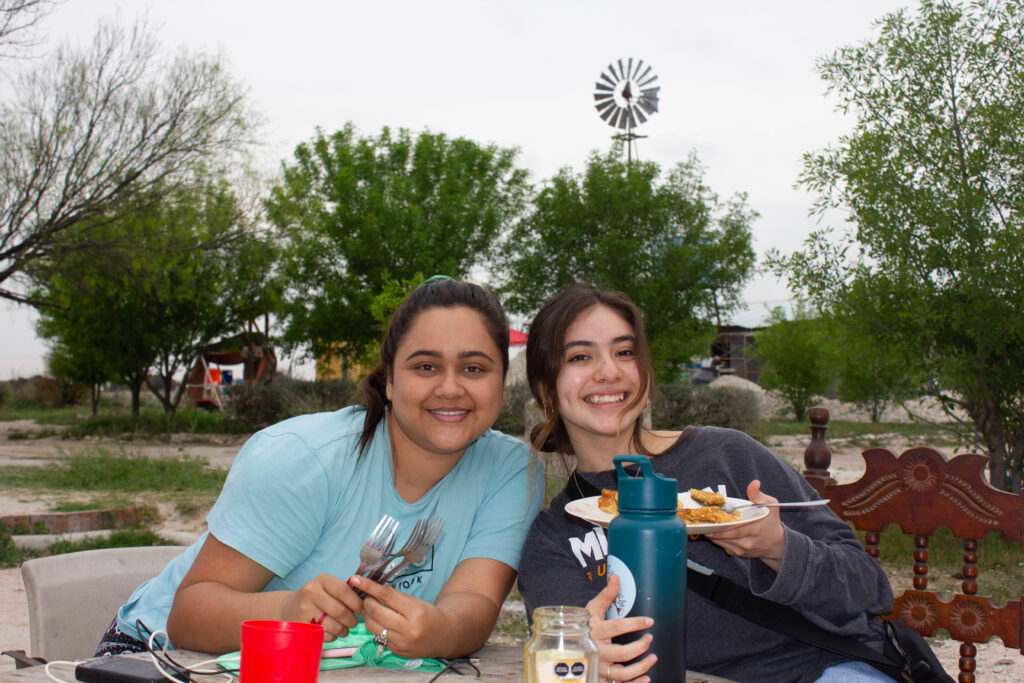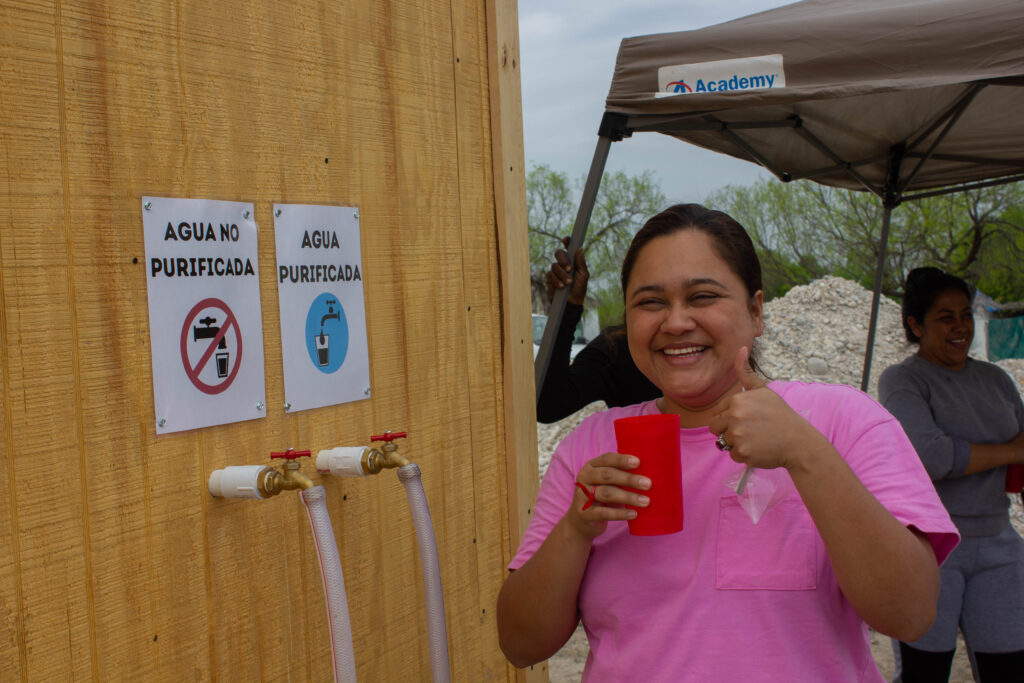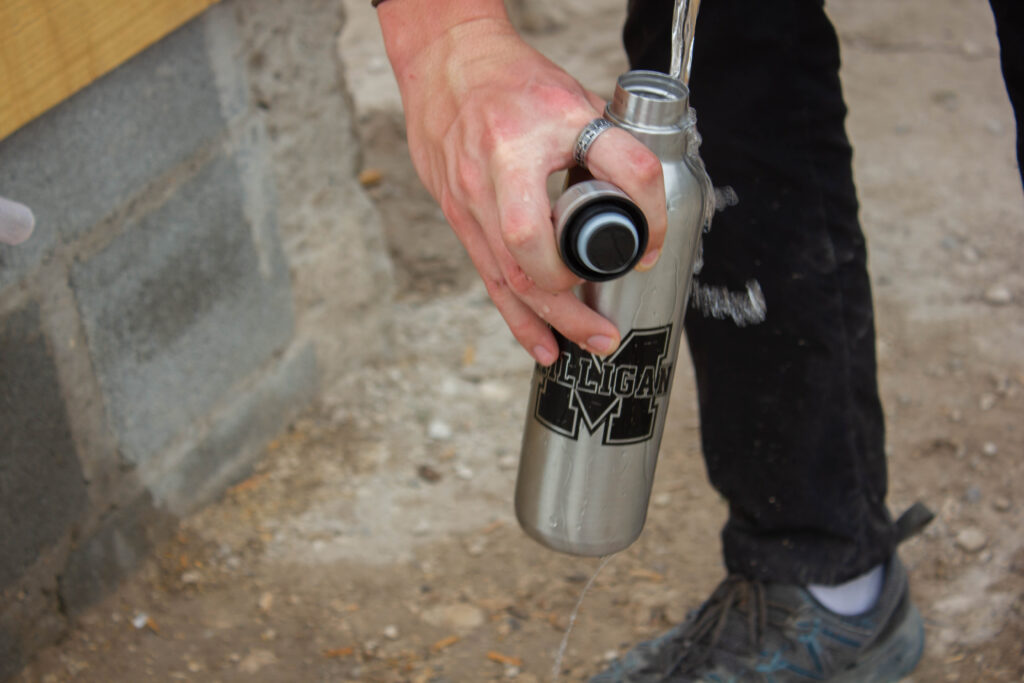“You’ve been given the opportunity to learn many things, don’t miss those opportunities.”
Dr. Greg Harrell’s most memorable line
On the rainy morning of Saturday March 2, a white rental van led by engineering professors Dr. Greg Harrell and Dr. Landon Holbrook left Milligan’s campus with five mechanical engineering majors and headed southwest, bound for Piedras Negras, in the state of Coahuila, Mexico, to finish their senior design project 1,400 miles away.

The project consisted of installing a water filter in CrossRoads Mission’s ranch, which is serving as a temporary shelter for immigrants, which would turn the city’s nonpotable water into drinkable water for the immigrants. If successful, the project would install pipes that would transfer water up from the city’s underground pump to a water tower. The students would then install tubing from the water tower to a newly constructed shed, where residents would find two valves, one for potable and one for nonpotable water. The filter itself would be stored inside the shed so that once a valve is opened, the water would come down from the tower, facing three filters and a UV light to disinfect it. The plan was ingeniously planned and executed, but the translation from paper to reality exceeded expectations.
For over thirty years, CrossRoads Missions has housed, fed and provided services for immigrants from many different countries. Founded by siblings Judy and Rob Lopez in 1993, what began as a group of students in the basement of Sutton Hall grew into a mission-based organization pouring into five different locations. Until January of this year, the Ranch in Piedras Negras had to borrow, buy and carry in water in truck loads. With the help of humanitarian organization Doctors Without Borders, the Ranch gained access to city water, but it was still not potable.

That’s when Milligan’s engineering program was presented with the opportunity to use its knowledge and skills to pour into this community. The students, led by faculty, promptly began working at the start of fall semester 2023. What began as the “Water Team” became the “Mexico Team” as each member joined at different stages of the project. In the end, the final group of students consisted of seniors Blake LaCroix, Luke Floyd, Camila Rivas, Kaelyn Slaughter and Jacob Nance.
I found out on the first day how important water was here. As the team unloaded and began to set up, a dog (I later learned his name was Arturo) led me to Rosalba, a 45-year-old immigrant from Honduras. She was washing dishes with a yogurt container over a stone surface outside her one-room home. We spoke briefly before she invited me in for a cup of coffee where she lived with a fellow Honduran immigrant, 30-year-old Marta Castro. Marta and Rosa each told me their stories over several cups of coffee. Our conversation wandered and eventually landed on the topic of water. Marta told of a time back in 2017, when in an attempt to cross the border, she found herself locked in a cargo trailer right outside Tamaulipas, Mexico.


Rosa washing dishes outside her home
“Our bodies were pressed together, we were all sweating because there was no air,” she said. “Babies were beginning to turn purple.We had run out of water over five hours before realizing we were trapped.”
Using a small ax she carried, they cut a hole in the roof of the trailer and held one person up at a time to breathe. When the Mexican police finally opened the trailer doors, Marta recalls the policemen handing out water bottles to which the other immigrants were hesitant to grab.
“I didn’t care, I needed water,” she said as she Googled the incident on her phone. “You can see in the pictures that my hand is the one reaching to the policeman for a water bottle!”
That first day, with help of local hands, the Milligan team put up the tower where the water would eventually be stored. To their surprise, they were also able to install the solar panels that would power the system. After months of planning, by the end of day one, the team was ecstatic to have progressed as much as they had.
“It was a surreal feeling,” said senior Kaelyn Slaughter. “This whole year Harrell had shown us pictures of this ranch, and we were like ‘that’s later that spring break,’ but it was hard seeing people live here with no electricity and running water.”
Cami Rivas added, “Putting the tower up was so stressful at the moment, but it was really cool seeing everyone band together and see the group effort it turned into. People stepped up and offered themselves to help us.”


Senior Cami Rivas reading the instructions on maintenance that will later be left behind for the Crossroads team. 
On day two, Rosa and Marta called me over to their home for a cup of arroz con leche and pancakes. Their home, which was about 80 feet from the worksite, had a small front porch where we stood and chatted over the team’s progress. They quickly became curious about the progress, and the three of us headed closer to the worksite where a small crowd of Crossroads interns and team members sat under a tent, taking a break from the sun.
Joseph Potts, a 24-year-old intern from Cleveland, Ohio, was among the small crowd. He shared his joy in working with the mission and in helping put displaced people back on their feet.
“Making them feel that someone cares makes a world of a difference,” he said. “We give them a place to shower and feel clean. A shower can make a person feel human again.” With the installation of drinkable water, he said, more immigrants were likely to find stability and a home in a place like the Ranch. That day, the team was successful in installing the tubing from the underground pump to the water tower, with hopes that the next day would fill the tank.
Day three was troubleshooting day. Beneath the sun in 90 degree weather the water began to run through to the tank. As we watched and waited, I spoke to senior Jacob Nance about what led him to be part of the Mexico team. Jacob began his engineering journey in the robotics club in high school.
“I worked on a project for a little girl with a condition where one arm was shorter than the other,” he said “We designed a prosthetic arm for her so she could tumble in gymnastics. We even included screws to adjust the size and a spring for her arm to do the movements she wanted,” Jacob described that as his “Aha” moment. “I realized I could help people by doing what I enjoyed.”
Similarly, senior Blake LaCroix also began his engineering journey at a young age with the goal to pour into others.
“For the longest time I would make toys we couldn’t afford,” he said. “I’ve always loved making stuff. My grandpa would encourage me by taking me to Walmart to buy duct tape and cardboard. I’d make swords out of wood and eventually I was making metal tools.”
Blake recalled being 12 years old when he first heard of the term “mechanical engineering.” He said a lot of the work he and his grandpa did included repairing things for people in their community, and that’s what he wanted to do. At age 15, he visited Milligan and instantly decided that was where he could do that.
“We pulled in and something about it felt familiar – I don’t understand it at all.” Blake described this feeling as something really important for someone who’d been shut in for 10 years as he had been homeschooled for most of his life. “That day, I decided Milligan would be the only school I’d apply to.”
On the final day, Rosa called me over as she and a family of Venezuelan immigrants had made quesadillas on a little stove oven outdoors. What originally was one quesadilla, turned into two, then three, and suddenly they were making enough for the Milligan team. (They even made the typical Venezuelan food Arepas for me to try.) As they handed me the plate full of quesadillas to share with the Milligan team, Dr. Holbrook went over to thank them for the food.
Dr. Holbrook is dedicated to serving through engineering and wants to share his passion with his students.
“I am a lover of culture and groups of people,” he said. “This is the first group of seniors to make a trip so far out. I was eager to come here with students to expand their expectations of life as they interact with the world and the people in it.”
Dr. Holbrok teaches the freshman class and does not have the same students full time again until their senior year, and his favorite part of the job is watching students grow in service.
“Freshman year, they work on a project called ‘Go, Baby Go,’ he said, “where they create power wheel vehicles so that kids with disadvantages can play. They provide these kids the freedom to have fun.”
Today, watching the senior class provide potable water for the immigrants, Dr. Holbrook described the experience as a privilege. “If we see our place as servants of people who God loves, we better understand ourselves.”
The long anticipated moment arrived on day four. As the students tested the water for bacteria, a small crowd of Crossroads team members watched excitedly for the final test. Kailin Slaughter, surrounded by her four team members, held the bacteria measuring device as it counted down from four, three, two, one, landing firmly on zero. A cheer filled the humid air as smiles grew on the seniors, realizing that they’d done it: they’d filtered drinking water for the immigrants.
Crossroads intern Marissa Williams and I went toward the immigrant homes to announce the success of the project. The residents, hesitant at first one by one, approached the valves with mugs, cups, and water bottles in hand to fill up. The first of them was a young woman who’d arrived the day before, a smile spread across her face as the crowd awaited her reaction. She was shortly followed by the seniors and the professors, filling up their water bottles before our drive back home.
Right before we left Piedras Negras On Thursday evening, , Marrisa Williams prayed and thanked God for the different minds present. Without the students, professors, past senior projects, the interns, the cooks, the extra hands and most importantly the immigrants, the project would not have been complete. As Judy López, the director of CrossRoads Mexico, closed our van door for the last time, she said, “You guys installed a water filter, but you did much more than that.”
When Milligan’s journalism department presented me the opportunity to accompany the engineering team on this project, I was unaware of all the untranscribable moments we’d share with CrossRoads. I cannot imagine having missed the opportunity to have had a cup of coffee with Rosa and Marta that first day. Though they fed me, they did much more than that.






